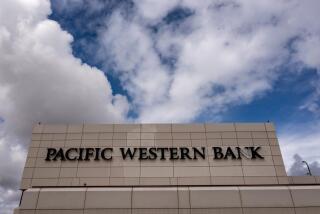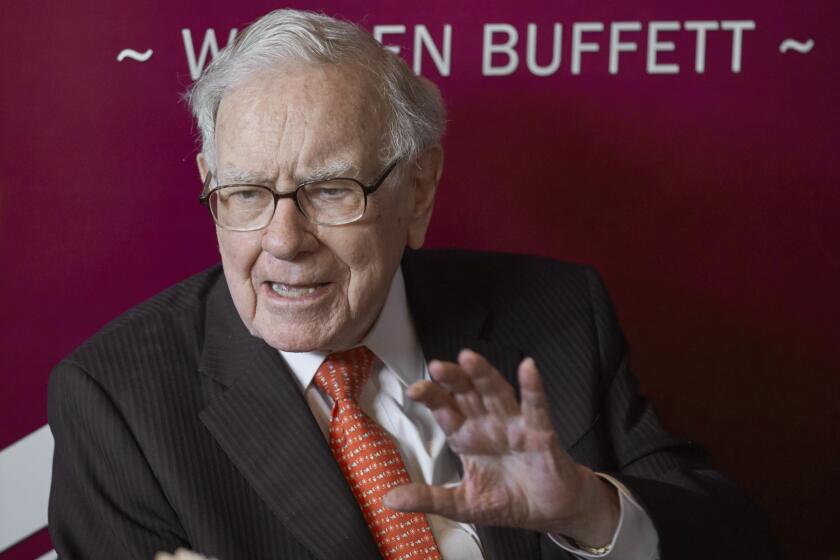Morgan Olmstead, Wedbush Agree in Principle to Merge
- Share via
Wedbush Corp. and Morgan, Olmstead, Kennedy & Gardner Capital, two Los Angeles securities brokerages, said Friday that they have agreed in principle to merge in a deal that would make the combined firm one of the largest regional brokerages on the West Coast.
The deal, whose value has yet to be determined, also could solve recent woes at Morgan Olmstead, a publicly held concern that lost $2.8 million in the first half of this year. Wedbush, privately held and believed by analysts to be profitable, is much larger than Morgan Olmstead--with about five times more capital and twice the number of employees.
“The combined entity will give us increased revenues and revenue sources. The efficiencies of the combined firms are obvious,” said Ronald J. Consiglio, Morgan Olmstead’s executive vice president and chief financial officer.
He noted that because both firms have similar operations concentrated in California, a merger would likely produce cost savings through shared facilities and data processing, among other things. Both provide a full range of services, including retail brokerage, investment banking, trading and clearing.
The deal also would be the latest of a series of brokerage industry mergers, spurred in part by declining retail commission revenue and higher costs in the wake of the October stock market crash. The largest such consolidation was the acquisition of troubled E. F. Hutton Group by Shearson Lehman Bros. late last year.
Plagued by Woes
The deal also would merge two firms with long histories in Los Angeles stemming back to the 1950s and before, when regional firms dominated the local brokerage scene instead of big national firms from New York. Wedbush, founded in 1925 and now believed to have about $60 million in capital and 600 employees, is a well-managed firm with tight expense controls, best known for its securities clearing operations for other brokerages, according to Perrin Long, brokerage analyst at Lipper Analytical Securities in New York.
On the other hand, Morgan Olmstead, founded in 1936 and now with about $13 million in capital and 270 employees, has been plagued by a series of operational and legal problems since it went public in July, 1986. Those woes, which included trading improprieties and the resignation of its disgruntled president, have marred the firm’s drive to become the dominant regional investment bank in Southern California.
Morgan blamed its loss in the first six months this year on reduced revenue stemming from the crash. Such losses and other problems also led some analysts to speculate earlier this year that the firm might be ripe for a takeover.
“For all intents and purposes, Morgan Olmstead is in need of better management and could use more capital,” analyst Long said in a May interview.
Merger discussions were initiated by Morgan Olmstead and were first disclosed in mid-May. Any combination is still subject to approval of both firms’ boards, Consiglio said. Wedbush Chief Executive and President Edward W. Wedbush would become chief executive of the merged firm, Consiglio said. Managements of both firms would be retained, although possibly in different capacities, he said.
The merged firm would become privately held, with certain principal shareholders of Morgan Olmstead to receive Wedbush stock while remaining Morgan Olmstead shareholders would receive an undisclosed amount of cash.
Some overlap of employees might result from the combination, but Morgan Olmstead’s Consiglio said it wasn’t yet clear whether any job reductions would be necessary.
Philip LoBue, a Wedbush senior vice president, said the firm would have no immediate comment.
More to Read
Inside the business of entertainment
The Wide Shot brings you news, analysis and insights on everything from streaming wars to production — and what it all means for the future.
You may occasionally receive promotional content from the Los Angeles Times.










